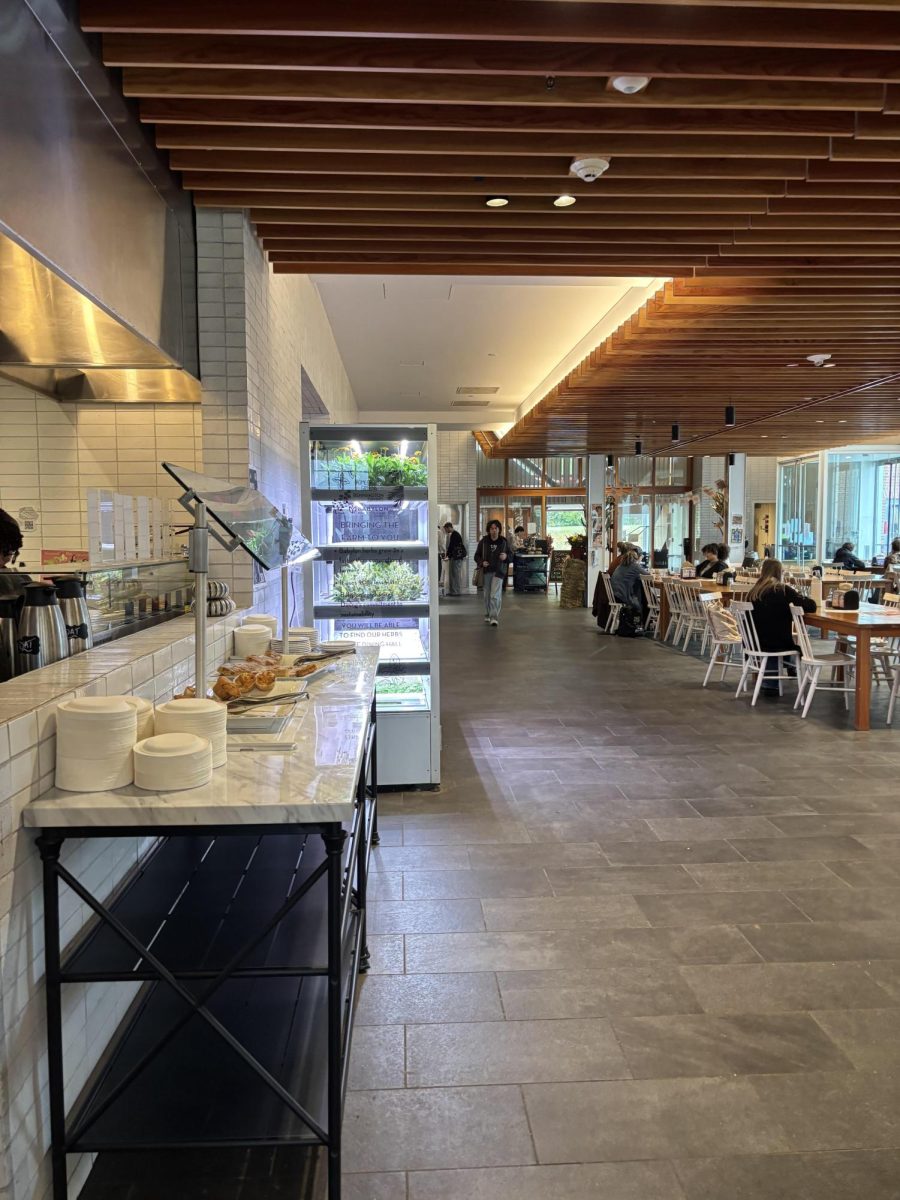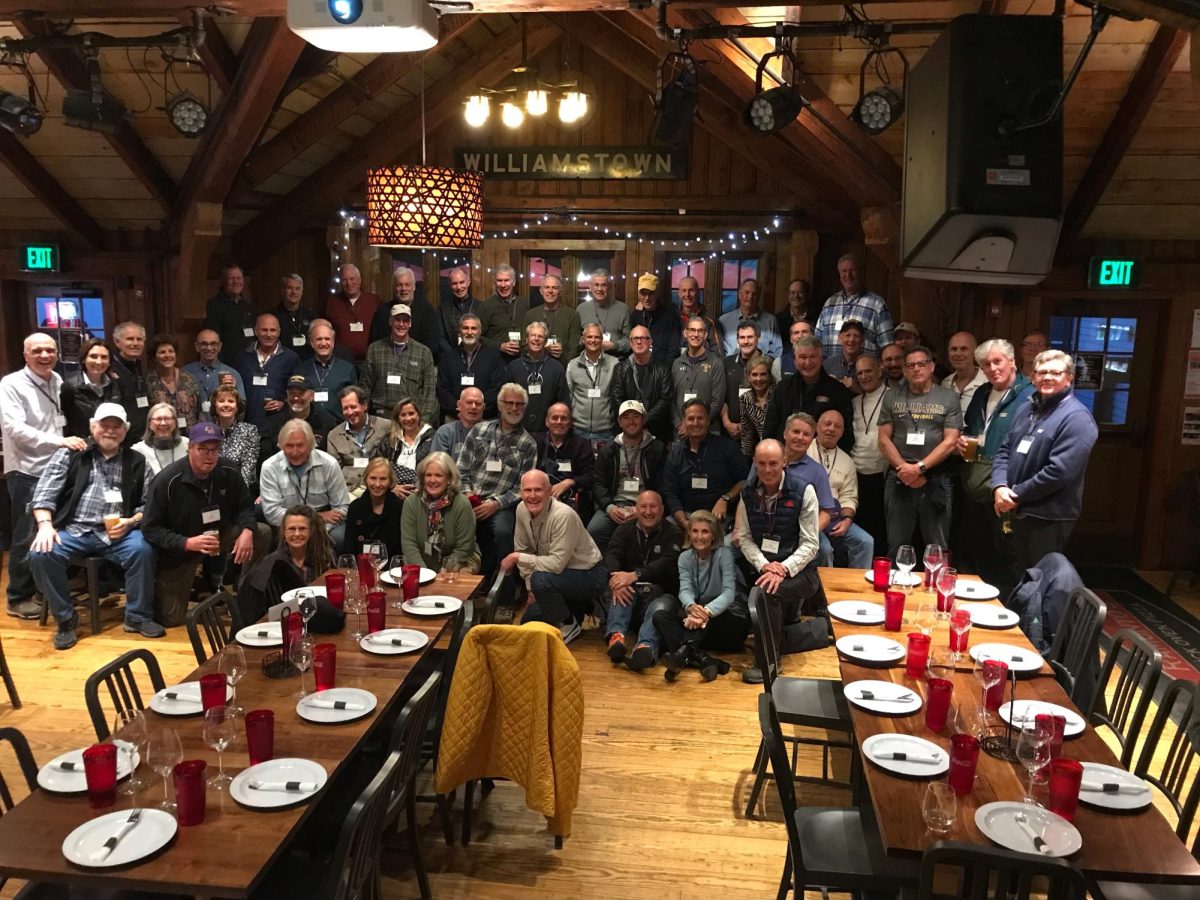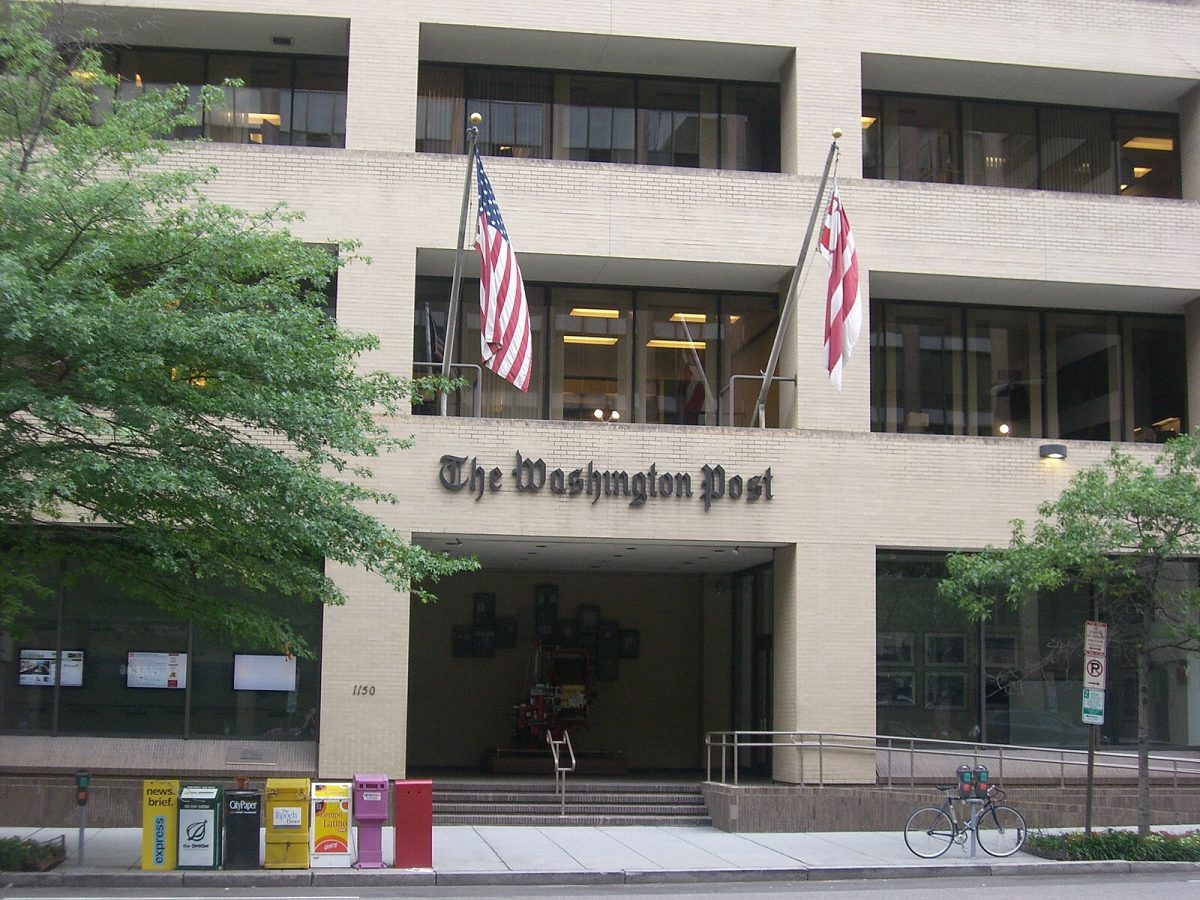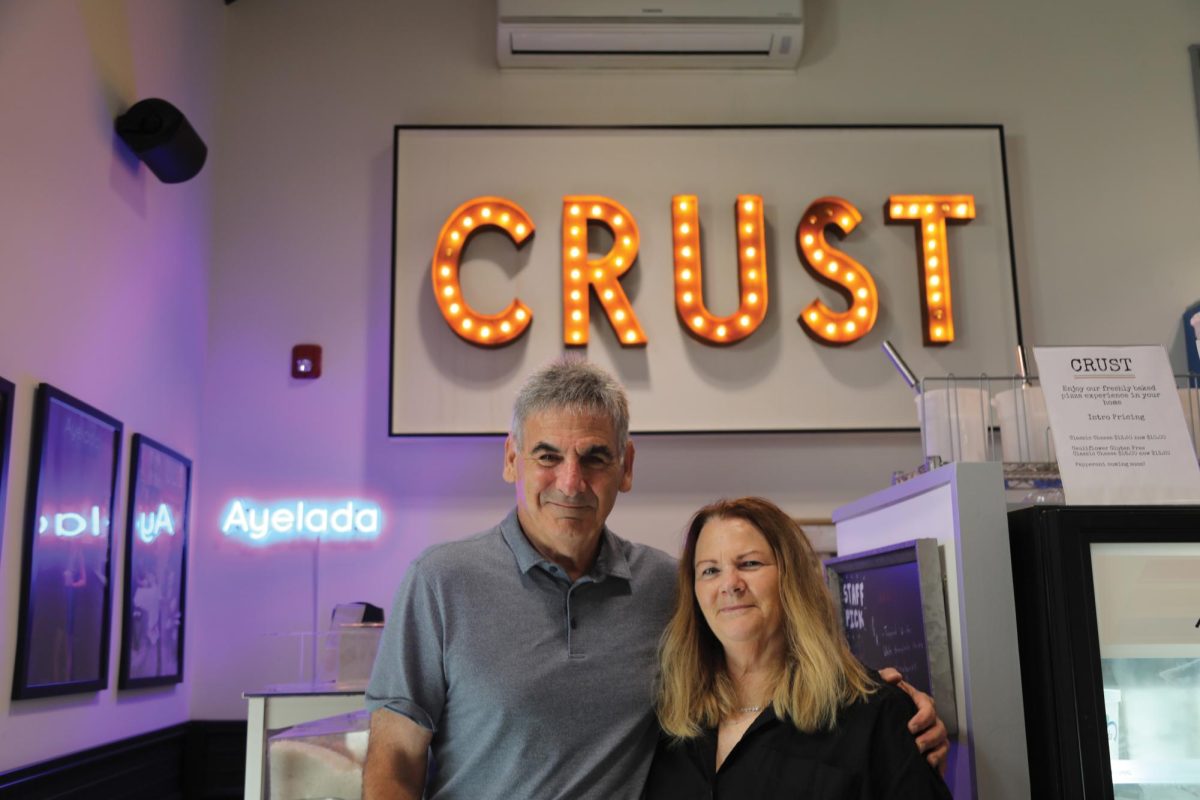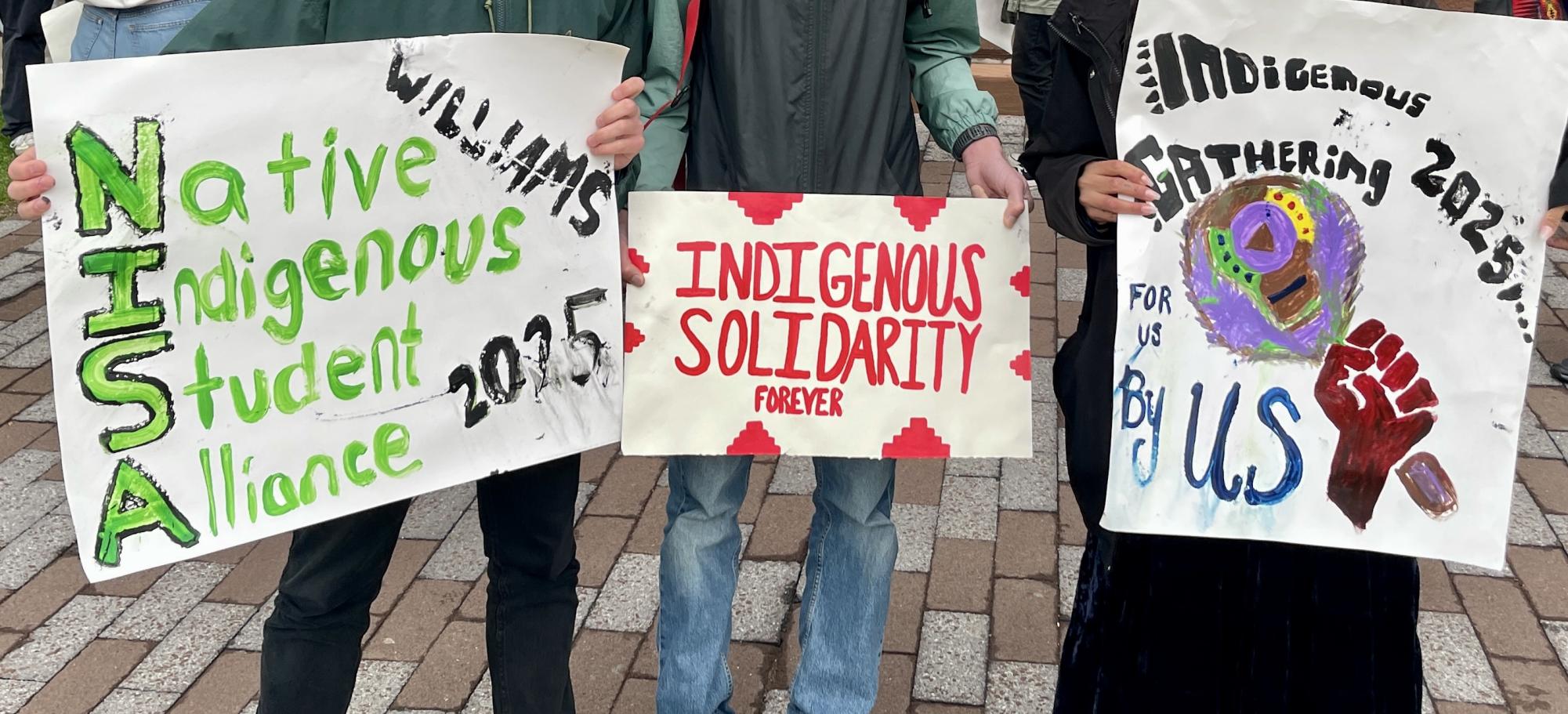
The Northeastern Intertribal Indigenous Community Gathering, hosted on April 26 by the Native American Indigenous Student Alliance (NISA) in collaboration with Native students from Dartmouth, honored and brought together Indigenous communities from across the country and globe in a day-long reflection and celebration of Native students, Native leaders, Native community members, and Native faculty in the northeast.
The gathering featured events including student and faculty roundtable discussions, workshops, performances from student groups, and community ceremonies. Over 60 students, faculty, and community members from the College, institutions around the northeast, and various Indigenous communities were present, according to Edan Zinn ’27 and Julian Arenas ’27, two non-Native members of the NISA board.
Events took place across campus, including at Schapiro Hall, on Sawyer Quad, and on the Mohican Trail. “I think the event was envisioned as something that would be mobile across the Williams campus,” Zinn said. “That’s how it played out, in a really beautiful way.”
From Zinn’s perspective, one of the main purposes of the event was to foster support for Indigenous students at the College. “I think the point of having a gathering was really to bring people here who can support Williams and … [to] create visibility for indigeneity in general on the Williams campus, to counter all the ways that it’s been suppressed,” he said.
According to Arenas, Daisy Rosalez ’25.5, chair and co-founder of NISA, along with other Indigenous students, took the lead in organizing the event. “The non-Native board of NISA assisted in the facilitation, but at the end of the day, it was Indigenous students who designed the events,” Arenas said.
Professor of History Christine DeLucia, who participated in the gathering, expressed her gratitude for the event in an email to the Record. “Students initiated, organized, and hosted this deeply meaningful gathering,” she wrote. “They’ve taken on tremendous leadership and collaborations to bring people together in a good way, grounded in clear ethics and relationships.”
The involvement of Indigenous communities reached beyond Williams and Dartmouth, extending to other institutions. “It was great to connect with so many students and community members that were coming in from Rhode Island, New York, and beyond,” Arenas said.
The opening ceremony began at Mohican Trail with several addresses to the community, from the event’s organizers. “People went down to the Hoosic River, and Daisy opened up the event,” Zinn said. “Shawn Stevens, who is an [enrolled] member of the Stockbridge-Munsee community, [followed] with a grounding and opening ceremony.”
Even before the opening ceremony, students and faculty began to connect through check-ins at Schapiro Hall. “I entered the room, and it’s this beautiful circle of people that are already connecting with each other, and people are eating and chatting, so getting ready for the day, so you can already feel the energy,” said Zorelly Cepeda Derieux, assistant director of alumni engagement for affinity and identity connections. “You could already start seeing the beautiful connection that exists between Dartmouth students and Williams students and the support they’re giving each other, and just the power of what they were doing.”
Cepeda Derieux, who got involved with the Indigenous community at Williams through building the Williams Indigenous Alumni Network and serving as a member of the Native American and Indigenous Working Group, also had the opportunity to meet someone who shared similar roots. “Daisy already had in mind who I should sit next to,” she said. “I’m from Puerto Rico, so we have Indigenous roots there, the Taíno, and [Daisy] was like, ‘This woman here, she’s a Taína. You should sit next to her and talk to her,’ and I’m like, ‘Oh, my God. That’s so great.’”
Later in the day, the group participated in a Unity Walk up Spring Street with drums, songs, and posters, ending with a group picture in front of Hopkins Hall. “I think that location is really important because of the historical significance of Hopkins Hall as a place [where] members of the Williams community — the Black community, the Latinx community — [have fought] for recognition and for ethnic studies, and that’s what’s happening now with the movement for Indigenous studies,” Zinn said. “People from the Williams community and from so many other places [were] at Hopkins Hall, saying to the community and administration, ‘This is what this movement is about, and we’re on the stairs of the administration, and you cannot ignore us.’”
The memorable moments persisted despite the downpour during the afternoon Community Welcome Ceremony on Sawyer Quad. “Students from outside of the Williams community were performing and singing about rain, and it started to rain at that moment,” Zinn said. “It was just very special. The rain did not detract at all from the event or what it could have been.”
The event also featured musicians, including Leila Ruser ’27, who played at the event with ¡Vive!, the student Latin music club. “We played ‘Tuyo’ by Rodrigo Amarante, and we played ‘Tú sí sabes quererme’ by Natalia Lafourcade,” she said.
Postdoctoral Fellow Kamal Kariem found the 10:30 a.m. roundtable session with students, faculty, and staff particularly meaningful. “It was folks showing up, and I think really, that’s what this whole event was about,” he said. “Really trying to get people to show up and build community.”
DeLucia highlighted the relationships between attendees as one of the most poignant parts of the day. “I especially appreciated the day’s intergenerational qualities, and the ways participants grounded the gathering in particular places,” she wrote. “I also have great respect for how students are building genuine relationships and systems of support across the northeast and beyond, and actively connecting with extensive Indigenous networks.”
For Arenas, the event had an impact beyond the push for an Indigenous studies department. “I think it’s important to note that this isn’t just for Indigenous studies and it’s very all-encompassing,” he said. “It’s demanding the College take actionable steps to support Indigenous students in every sense of their time here on campus.”
Looking ahead, DeLucia hopes to see similar events on campus. “I think it will be essential for gatherings like this to continue,” she wrote. “They emphasize the importance of Indigenous work throughout the year, and the continued self-determination and commitments of people and communities.”
“A program like this counteracts continuing forms of colonialism and attempted erasure that shape so many institutions — as numerous people here have been saying for a long time,” DeLucia added. “I think it was important that in addition to NISA, other students, faculty, and staff members were in attendance or otherwise directly supportive. These efforts extend across the campus and can continue to grow in this way.”



